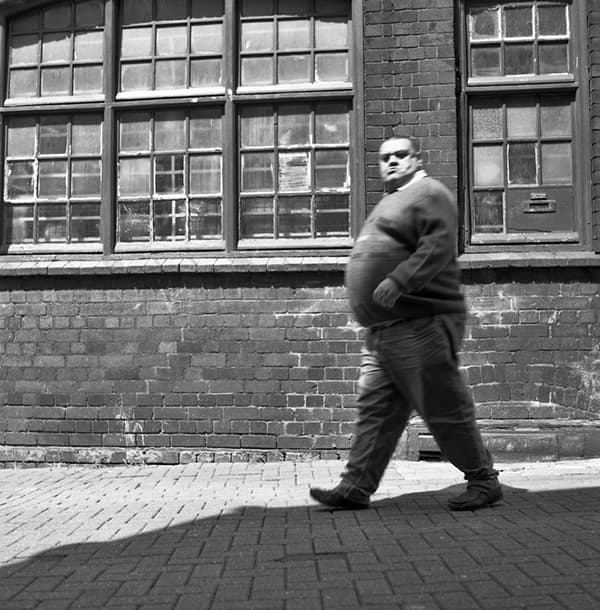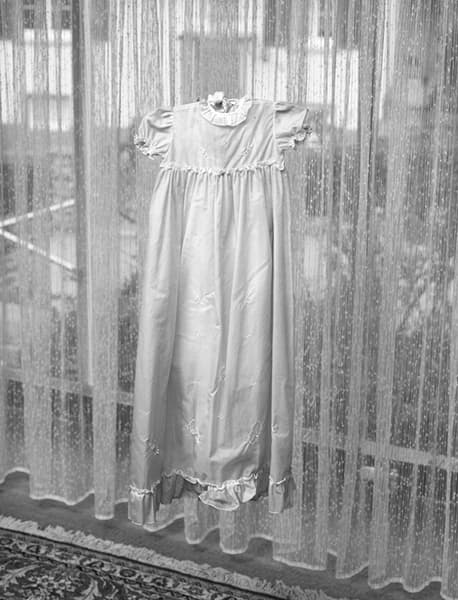
They Were My Landscape © Phoebe Kiely, 2015
The Open 2: Pieces of You exhibition is running from 15 April-5 June 2016 at the Open Eye Gallery, Liverpool. The exhibition includes the work of six new and early career artists predominantly from the North. Each artist shares a curiosity in exploring how we gather and make meaning of our experiences.
The exhibition is said to offer new ways of experiencing and thinking about photography – making structures within the gallery to enter the artist’s narrative space, toying with standard ideas of display. We caught up the curator of Open 2, Thomas Dukes, to find out more.
All the exhibitors are from the North of England. What made you choose to focus on this specific locale?
With the gallery based in Liverpool, it makes sense that we make space and time to strongly support our regional communities starting close to home, alongside national and international names.
The North of England has incredible photography courses and a rich history of projects, commissions and exhibitions that have been important in the development of the UK photography scene – we want to support the next generation of photographers and show them that there are routes whereby they can have a professional gallery exhibition.
With that intention, we were fortunate enough to receive funding from the Brian Mercer Charitable Trust, which supports emerging artists in the North West.
The exhibition is hailed to be about ‘making meaning of our experiences’. Can you expand on what this entails?
Well, it’s important to remember that the exhibition’s primary purpose is to support and exhibit new and emerging photographers. With that in mind, the exhibition theme wasn’t pre-selected with projects or participants chosen to fit – rather, it just seemed a shared curiosity or preoccupation across the projects.
And I think it’s something that we all use photography for increasingly now; whether it might be a case of looking back at a family photo album to try to understand our childhood, or re-visiting a location to photograph the places those family events took place, or a way of moving through a day, photographing to project or record our lives. Increasingly, images mediate our projection of self and understanding of the people and events around us.

© Stephen Iles and Nicola Dale, 2016
How do the artists portray this theme in different ways?
The way the artists’ project work together has been really engaging for me – the contrasts in their approach to photography and its meaning or use has its own value!
Peter Watkins uses photography to question these objects that have been present in his formative years, trying to get closer to an understanding of his family history, whereas Phoebe Kiely’s hand-printed black & white pieces are fleeting moments that are printed and change throughout the exhibition – Phoebe the only constant.
Photographer Stephen Iles and sculptor Nicola Dale collaborated to work on the boundaries in communicating meaning where the single perspective of the photograph might overlap with the 3D, temporal nature of sculpture.
Sam Hutchinson has reflected on how the domestic visual experience of the TV game show, familiar as a child, can be re-examined as a strange constructed reality – with lines of RGB pixels running through the images.
Finally, Thom Isom has worked very closely alongside all the artists to create a publication available to buy, letting you re-combine projects which are separated in the gallery, to find new meaning through editing and remixing images and materials.
Open 2 is part of three exhibitions featuring artists who all applied via the exhibition submissions process. Can you tell us a bit more about what this is, and how it works?
Yes, it’s our online submissions process. Or you can send over a physical project outline, if you like. It’s a really good way for me to see what photographers are working on, what’s interesting to our audience and how new work is moving. We certainly can’t reply to every submission, but it’s a great way to see work that I otherwise might not have been likely to see.
Can people still apply for the next exhibition?
You can always send work to the gallery – not only for the Open series – but yes, we’re still looking at photographers for the next exhibition.
From all the entries, how did you choose the artists and images to be featured in the final exhibition?
Choosing the artists was a pleasure. Having seen their work and read their project outlines, I’d often meet and talk to them, starting conversations about what they were interested in.
For the final exhibition selection, again it was a real dialogue – we often started with the idea of how our visitors were going to engage with what they wanted to realise as a photographer, and what they could achieve having the space. The selection would then grow from that point, thinking about connections to the other exhibitors in the gallery, or how the audience might read the work.

I Used To Think You Were Normal © Sam Hutchinson, 2015/16
Open provides a platform for displaying new work from emerging artists. Why do you feel it’s so important to provide this platform?
We always look to connect people to photography, and encourage new photographers through workshops or network events with [Manchester-based] Redeye, for example. But this is one of those rare occasions where there’s an exhibition as part of that development and discussion.
I feel a great deal of urgent, vital feeling work is made by people who are yet to be seen as established, or in the canon of photographers you might naturally turn to, so having this platform means students or people interested in photography can see fresh work that can make them consider their position on different visual styles, or see routes into a gallery. It also means that these photographers get some more experience producing a large gallery show with the pressures and opportunities that go along with it – that’s good for developing some of the next visual practitioners.
I would add to this that we’re very interested in systems of validation for photographers, with the idea of a gallery exhibition often dominating in value of output. There is some change with the rise of craft printing and alternative projects, but we’re talking with different photographers and commissioners to better understand and realise other routes to validation. The platform that we provide here could then have other, creative and challenging, iterations in the future.
The exhibition is sponsored by the Brian Mercer Charitable Trust. What is this and what made the trust interested in sponsoring the exhibition?
Dr Brian Mercer was an industrialist and inventor based in Blackburn, Lancashire, who valued creativity. As a philanthropic trust, established after the death of Dr Mercer, it prioritises prevention and relief to human suffering, supporting promising young artists, primarily from the North and causes local to Blackburn.
There was a meshing of intention with us looking to support emerging Northern artists, so we were able to work together.
I hear there is a programme of other public events connected with the exhibition. Can you tell us more about what these are, and how people can get involved?
We are working with a number of really interesting different groups to create an involved public programming alongside the exhibition. To start, there’s an opportunity to meet and talk to each of the artists, whether in a formal talk or on one of the free exhibition tours. Or, in Phoebe’s case, a chance to learn some darkroom practical skills with her.
We mentioned the Redeye network, and they’re a great nearby group to host events for and by photographers – in this case, discussing quite informally (although with a philosopher and photographer) the idea of how much ‘meaning’ an image can contain.
We work with universities, so there’s a PhD placement with us, a poet named Pauline Rowe, who has been a great pleasure to work with. She’s interviewed each of the artists (available to read on our website) and will be running creative writing workshops in response to the exhibition.
It’s always best to phone or email and book, but have a look online or in our gallery guide for the full list of public events in the gallery.
What would a visitor get out of visiting the exhibition?
Well, perhaps visitors will get a new set of ideas on how images come to tell our stories, be our experiences that we can share, and how far they can perform that function. Perhaps they will gain a slower, more appreciative way of looking into the fleeting moments or everyday objects that surround us. Or maybe just a more critical eye for the visually given experience. Maybe it will be just somewhere out of the wind of the pretty waterfront with some pretty fun spaces to wander around! Certainly there’s a good shop for film and photography books.

The Unforgetting © Peter Watkins, 2015
What are the plans for future Open events?
We plan to keep talking with visitors, photographers and thinkers to better express all the ways in which we use photography. We want to support students, amateurs and anyone interested in visual culture with something to say. It’s a really inspiring time to be working with photography, so the challenge is on us to keep up with the people communicating, sharing and documenting their lives in ever more creative ways.







